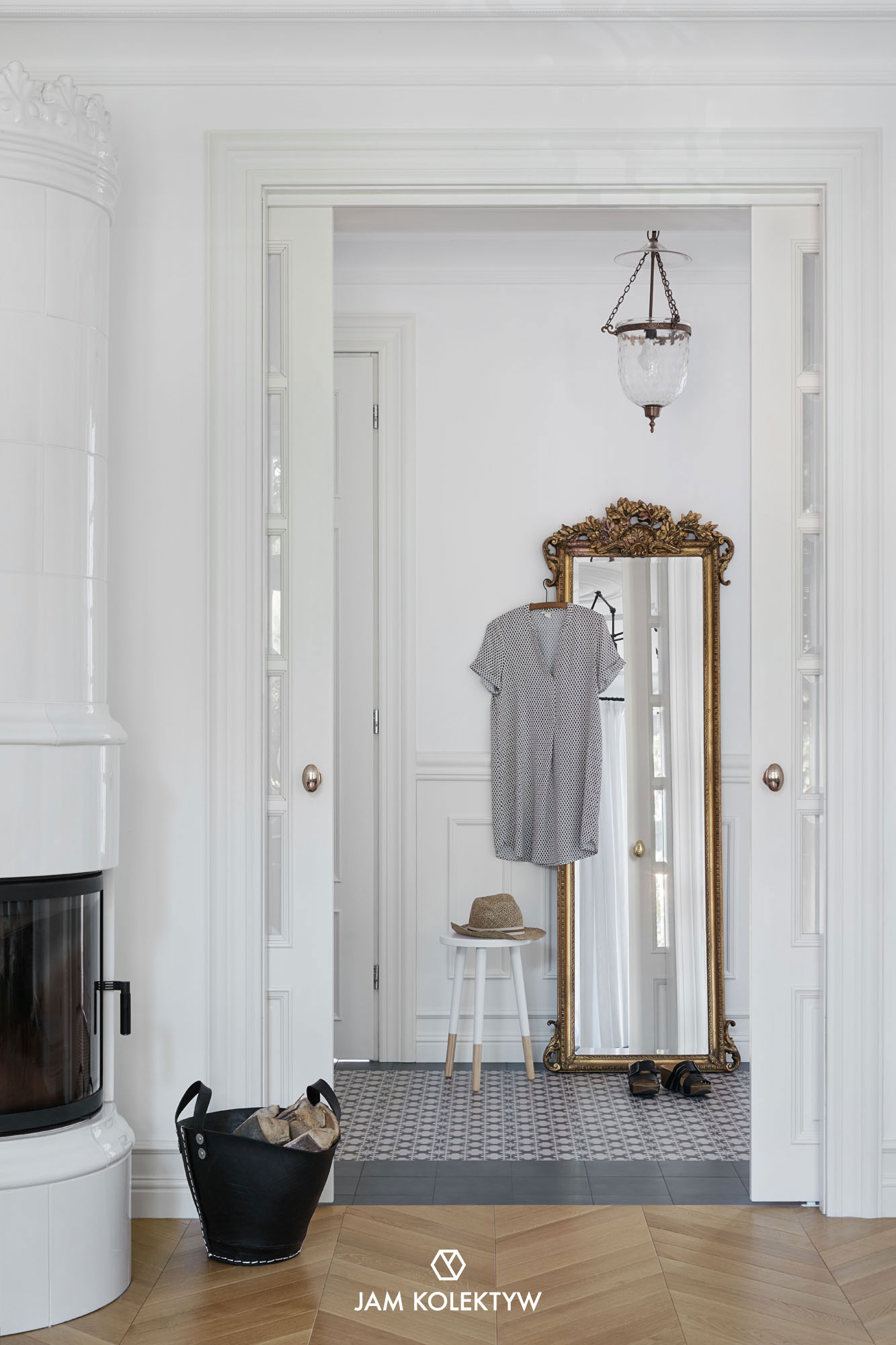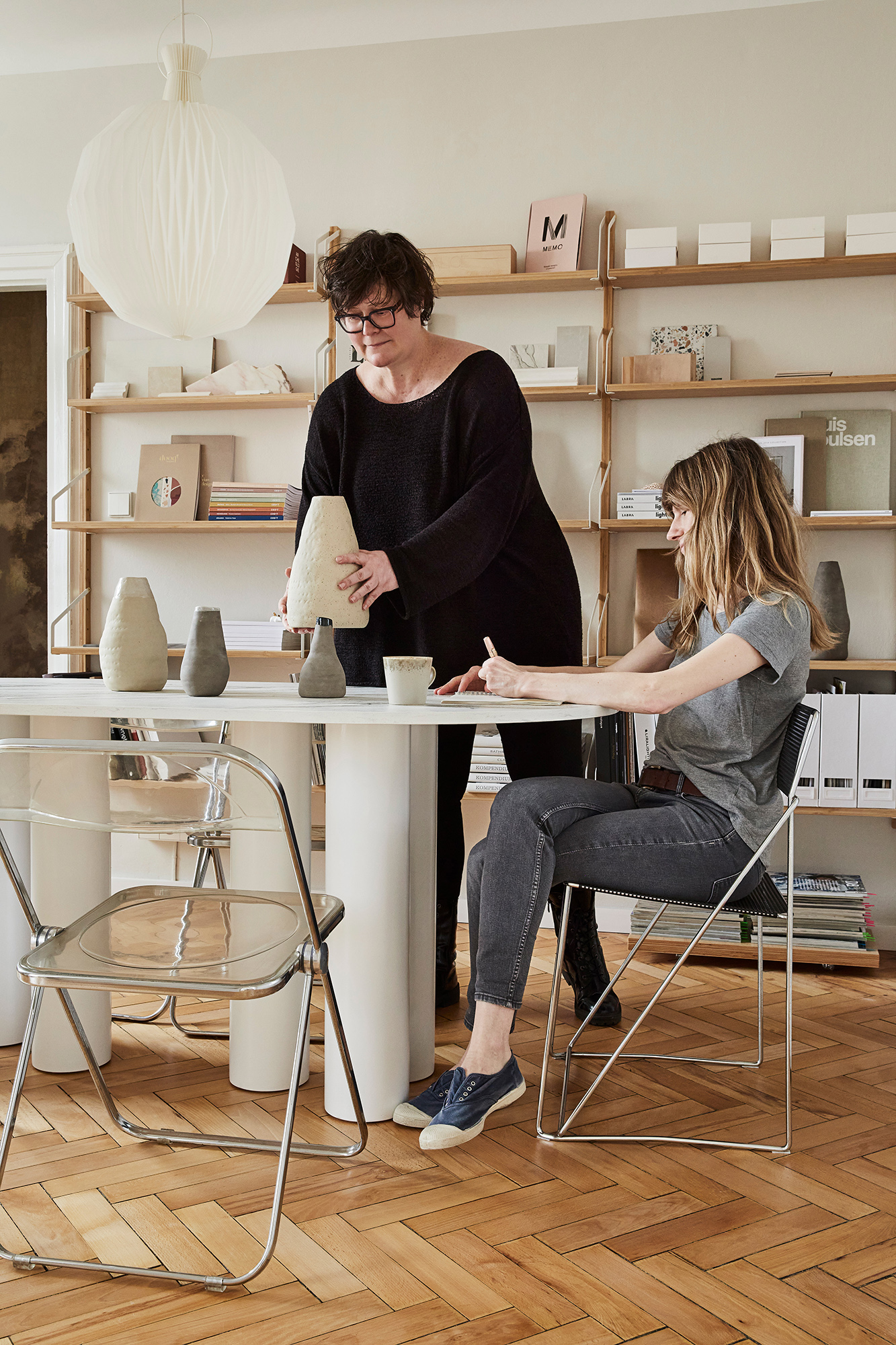An aftermarket apartment – extracting beauty from an old apartment.
- March 27,2020
- Posted By Anna Olga Chmielewska
Every interior has its own history connected to the fate of its dwellers, the location and the time of creation. A renovation of an aftermarket apartment can prove to be a challenge – the new residents’ needs have to be woven into an architectural story that has started many years before.

When beginning a renovation project of an old apartment, regardless of whether it is located in a prewar tenement or a block of flats from the 70’s, we start with a precise exploration of the space, the stairwells, the floors and any preserved details. Why? Simply because the existing architecture often suggests the best aesthetic solutions.
During the developer’s renovation work of the tenement, the apartment lost all of its details, as well as an enfilade arrangement of rooms. Our goal was to restore the prewar atmosphere of both the architecture and the elements of interior decor.
It occasionally happens that we discover unusual details beneath the layers of flooring panels or wallpapers and decide to restore their former glory. Sometimes it’s the old photographs that reveal the elements of balustrades, ferrules, decor details or moulding, and although there isn’t a way to reconstruct them, they become an inspiration for new design solutions.
In order to learn how the space was designed years ago, we often start the work on an old apartment with removing layers of materials from the renovations carried out over decades.
BEFORE

AFTER

Having gathered information about the place and the residents, when we know what architectural base we’re working with and once we’re familiar with the investors’ dream list, we start to work on the project. We enjoy mixing motifs – when design history meets new technology, optimal solutions are created for the time and space. This allows us to create a contemporary interior, which is at the same time rooted in the esthetics of the space and its architecture.

Only the headrest remained from this bed, and it was renovated by craftsmen who cooperate with our studio on a regular basis. The modernly made base was fitted to a mattress. The wardrobe – the owners’ family keepsake – gained a new, lighter tone, which definitely fits better with the current atmosphere of this interior.
Years of experience in interior design and renovation allowed us to come up with our own formula for extracting beauty from an old apartment.
See below for the four principles that guide us during this type of implementations.
1. WE RENOVATE INSTEAD OF REMOVING
We pay special attention to the following elements and make sure to think twice before we decide to discard them.
FLOORS – parquets, tiles, stone details, terrazzo.
WOODWORK – on doors and windows, old internal and external shutters, door handles and ferrules, wooden window sills.
MOULDINGS – we’re able to reconstruct the whole, based on just small fragments.
CAST-IRON DETAILS – heaters, ventilation gratings, balustrades, ferrules.

We mix new with the old out of respect for tenement apartments. It’s the only way to protect unique spaces and at the same time take care of the comfort of residents who live there.
FURNITURE – it’s always worth to take a look at the furniture left by previous residents. Too many beautiful objects, especially from post-war, ended up in the garbage. Undervalued and disregarded because of their association with the dark times of communist Poland, they in fact often have a collector’s value and a beautiful form. If after the renovation they won’t fit in the space, it is worth selling or giving them to someone else.
2. WE USE LONG-LASTING, NATURAL FINISHING MATERIALS
WE AVOID MAKE BELIEVE SUBSTITUTES, meaning materials pretending they’re something they aren’t – wood imitating floors or stone emulating laminates. With a variety of finishing materials to choose from, we’re always able to select the appropriate product that fits the atmosphere of the interior, as well as the budget. Economizing on finishing materials is short-sighted and can end up costing more in the long perspective.
WE CHOOSE GOOD QUALITY DETAILS. Door handles, electric accessories, mop boards and all other elements which are intensely used every day. They’re the elements establishing the standard of the interior.

Think how many times a day you turn the door handle, hit the light switch or put plugs in the electric sockets. It is worth choosing products that won’t have to be replaced often. Trust us – this one-time investment is simply cost-effective.
2. WE OPT FOR CRAFT METHODS
We avoid mass-produced products and value the “human touch” of a carpenter, a locksmith, a glazier or a stonemason.
Long-lasting, natural materials age nobly, remain in the interior for years and allow to avoid future expenses.

Less is more – probably everyone knows this design master’s phrase. Currently everyone is trying to lead a slow life, act in accordance with the less waste idea and be eco-friendly. How does it relate to design? It’s embodied in preserving and renovating, instead of removing and discarding; in saving for the dream furniture piece, instead of buying a low quality one right away; or in asking oneself (and it’s really worthwhile): “Do I really need it?,” instead of cluttering up the entire space beyond reason.
4. WE ARE SENSIBLE IN CHOOSING FURNITURE AND ADD ONS
WE HAVE A REASONABLE PROCESS FOR DECIDING ABOUT THE QUANTITY OF FURNITURE essential to offer comfort. We avoid excess and opt for quality, rather than quantity of objects and furniture.
WE INTRODUCE ART AND GOOD DESIGN, which through a dialogue with the residents will usher in spiritual and timeless value to the interior.






